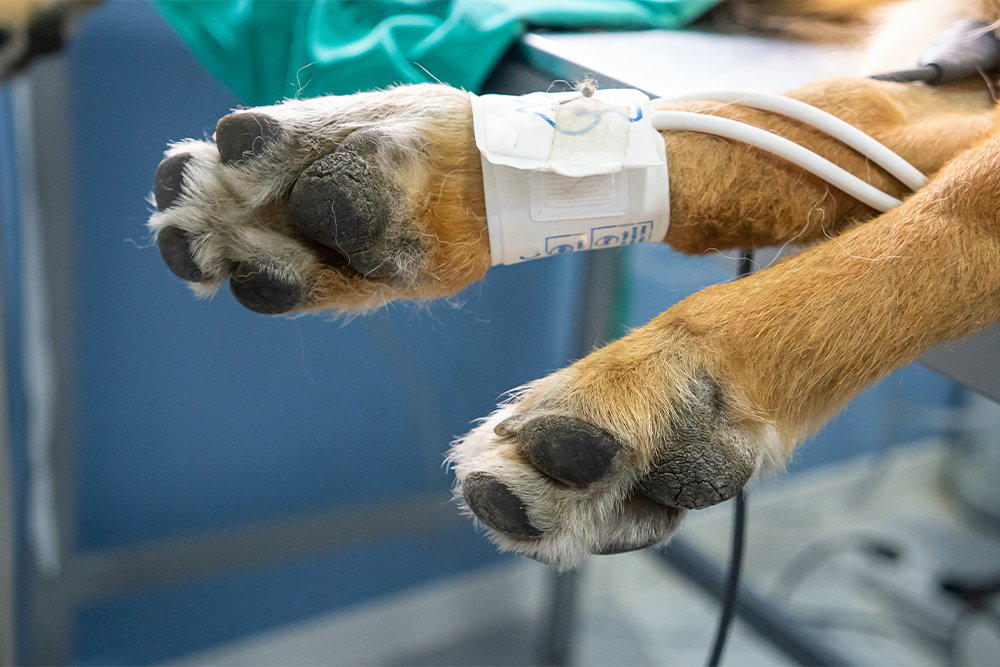We use cookies to make your experience better. To comply with the new e-Privacy directive, we need to ask for your consent to set the cookies. Learn more.
Measure While Awake: A Brief History of Veterinary Blood Pressure Measurement

Written by Mike Brampton, Inventor of the Cat+ Doppler, Thames Medical
Blood pressure is one of the fundamental measurements we take when a patient is under anesthesia - but should we limit ourselves to only taking readings when the patient is unconscious?
How much better would it be if we could identify and treat hypertension before it got serious, before the retina detaches or before the onset of progressive renal disease? The CAT+ Doppler blood pressure monitor is a technology that allows for accurate, real-time blood pressure data on conscious animals.
The newfound accuracy in blood pressure readings as a diagnostic tool presents the opportunity to monitor patients other than those with identified problems or under anesthesia.
Here are five tips for accurate blood pressure readings on conscious patients using the CAT+ Doppler:
- Make sure you have your equipment prepared before you meet the patient.
- Approach the procedure calmly and with confidence.
- Try to relax the pateint - anxious patients tend to give high blood pressure readings. By using the headphones, you can amplify the sounds you needto hear and eliminate noise that may startle the patient.
- Release the cuff pressure smothly and fully each time you attempt a reading.
- Document everything - time of day, limb used, cuff size used, venue, personnel, patients' attitude. This will allow for consistency across readings.
How did we arrive at these best practices? It is useful for veterinarians and vet techs to know how modern techniques were derived.
A brief history of blood pressure
Blood pressure was discovered in 1733 by Rev. Stephen Hales. He conducted his initial work on horses using the original arterial line - a brass tube inserted into the femoral artery connected to a glass tube running vertically out of the horse’s neck (1). Using this tool, Hales took measurements as the blood would rise and fall.
Renal disease and hypertension
Renal disease is a commonly discussed in feline medicine and was first mentioned in 1830’s when Thomas Young and Richard Bright (Bright's Disease) made the first links between hypertension and renal disease. Early screening and monitoring of blood pressure today give us the chance to treat impending renal problems and improve the patient's quality of life.


Systolic pressures and the sphygmomanometer
The next breakthrough in blood pressure management came in 1896 when Riva-Rocci used an inflatable cuff to not only control the blood flow in the limb being measured but to measure that pressure. To measure this, he invented the sphygmomanometer or sphyg for short.
He considered the advantages of his device to be “ease of application, rapidity in action, precision and harmlessness to the patient” all of which hold true today. One error made by Riva-Rocci, however, was that the cuffs he used were very narrow, giving erroneously high readings.
This element has now been thoroughly investigated and the consensus is that for accuracy a blood pressure cuff should have a cuff width between 30 and 40% of the limb circumference. Most BP Cuffs now have range markers printed on them, meaning there is no need to premeasure the patient and so long as the cuff wraps around within the marked range then that is the cuff to use for accuracy.
Systolic and Diastolic pressures
Riva-Rocci could also only measure systolic pressure because he was using palpation as his method of determining when the blood could move past the cuff (systolic).
This changed in 1906 when a Russian physician, Nikolai Korotkov modified Rocci’s technique by using a stethoscope to listen to the sounds made as the blood moved past the cuff. The sounds heard are now known and still used today as Korotkoff sounds and enable both the determination of the systolic and also the diastolic pressure in all areas of human medicine.
Electronic stethoscopes, the doppler
It wasn’t until the early 1960’s that veterinarians have been able to accurately determine the blood pressure of our patients. This was facilitated by the vascular doppler, which was originally designed and still used in detecting pulses in erectile disfunction labs across the USA. It is interesting to note that the design hasn’t changed and this model is still in use today.
The next breakthrough came in 1997 (2) with the introduction of a new virtually indestructible but sensitive doppler probe, the CAT+, that enables users to detect just like Korotkoff both the systolic and diastolic pressures of the patient.
Why Doppler is more accurate than other methods
It is important to note that Riva-Rocci and Korotkoff’s work resonates down the years till today: the manual technique is still taught and accepted as the gold standard method of blood pressure determination in both human and veterinary medicine.
The key to this accuracy is that the technique is immune to movement, which can be prevalent in conscious animals. They can twitch at critical moments, which nearly always throws automatic or oscillometric units into a spin because they are palpating and measuring the pulse pressure under the cuff.
This doesn't occur when using a doppler because the sphyg is simply displaying the pressure and the user is listening to the pulse and then reading the sphyg gauge.
Standards
Even as technology continues to develop, in 2020, the FDA still requires that all modern blood pressure equipment is validated against this technique (3) as well as direct invasive measurement and is the default position in current FDA clinical trials for human medicine.
The only difference in veterinary use is that we replace Korotkoff’s stethoscope with the doppler to listen to the pulse sounds and the CAT+ Doppler is the FDA’s unit of choice for current drug trials.
As you treat patients, consider the value of accurate, consistent blood pressure readings while they are conscious. The improvements in patient outcomes are noticeable, and it represents a step forward in preventative care.
References:
1. www.epi.umn.edu/cvdepi/essay/reverend-stephen-hales-on-blood-pressure/
2. www.thamesmedical.com/brain-saladsurgery-cat-doppler-the-development-goldstandard-product/
3. www.fda.gov/regulatory-information/ search-fda-guidance-documents/non-invasive-blood-pressure-nibp-monitor-guidance






